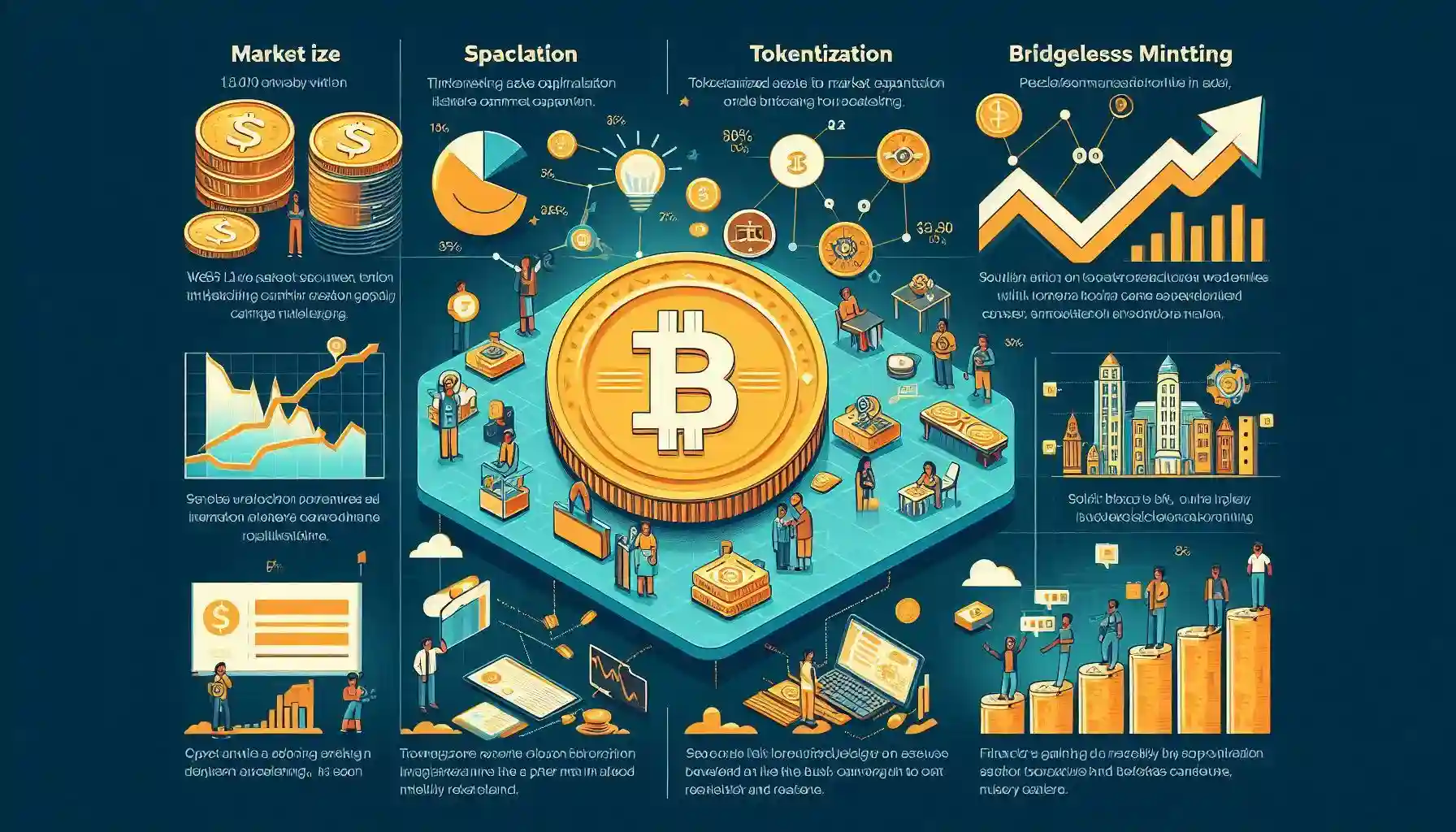Tokenization’s Rise in Web3
Tokenization has taken center stage in Web3 over the past year, drawing immense investment and attention from BlackRock, JPMorgan, and other key players.
Market Growth and Predictions
Despite a ‘slow start’, analysts predict asset tokenization will reach a $2 trillion market size by 2030. The momentum is evidenced by the surge in popularity of tokenized US treasuries during the recent bear market, with market capitalization soaring by 782% in 2023 alone, from $104 million to $917 million.
Expanding Horizons: Beyond Finance and Gaming
At the same time, the global blockchain gaming market is expected to reach $614.91 billion in 2030. The advantages are clear: increased liquidity, enhanced transparency, heightened security, and seamless global access and ownership.
Potential in Various Sectors
Beyond finance and gaming, tokenization also holds the potential to revolutionize real estate, gaming, and supply chains; indicating a new era of accessibility and efficiency.
Challenges on Public Blockchains
Scalability Issues
Despite these promising developments, the path to a fully tokenized world is fraught with challenges, particularly caused by public blockchains. Professor of Financial Regulation at American University, Hilary Allen, has previously warned of the “fragility” and inefficiency of public blockchains in the case of mass tokenization.
Transaction Delays and Fees
The issue? Scalability. Scalability issues plague popular public blockchains, hindering their ability to manage high transaction volumes. A Bitcoin transaction takes about an hour on average to be validated but this depends heavily on network congestion. Ethereum faces a similar scalability hurdle.
Security Concerns
An uptick in transactions on the chain caused gas fees to skyrocket to record-breaking levels in the first quarter of 2024, slowing the network to a crawl and making it effectively unusable. Yes, gas fees have dropped since, but these issues remain a problem to be solved, and they extend beyond transactions into the minting and tokenization space.
Security Vulnerabilities
Security vulnerabilities further complicate things. The potential for hackers or nefarious groups to gain majority control of a blockchain’s consensus mechanism, often dubbed a ‘51% attack’, poses significant risks.
Challenges and Solutions: Alternatives to Public Blockchains
Are There Robust Alternatives Beyond Public Blockchains?
Despite these challenges, alternatives like ‘Layer 2’ solutions have been proposed to address scalability and security issues.
Layer 2 Solutions
These solutions take much of the strain away from public blockchains, processing transactions off-chain or bundling transactions together before submitting them to a Layer 1, vastly reducing congestion and facilitating more efficient transactions at much lower costs.
Limitations of Layer 2 Solutions
However, these Layer 2 solutions are not without their limitations. They still depend on the underlying Layer 1 blockchain and there are often trade-offs between security, scalability, and decentralization with Layer 2 solutions.
Bridgeless Minting for Scalability
Bridgeless Minting
Alternative on-chain minting methods also promise avenues for improved scalability and efficiency.
Polkadot’s Approach
For example, Polkadot’s cross-chain protocol (XCMv3) allows blockchains to interact with each other seamlessly. L1s building with Polkadot can lean on an aspect of XCMv3 called ‘Universal Location’ which enables different consensus systems to refer to resources within each other.
Future Prospects: Unlocking Tokenization’s Potential
Unlocking Tokenization
The journey towards a fully tokenized world requires robust alternatives to public blockchains. Continued exploration and development of secure on-chain minting methods are crucial.
The post Rethinking public blockchains to protect the fragile future of tokenization appeared first on CryptoSlate.















